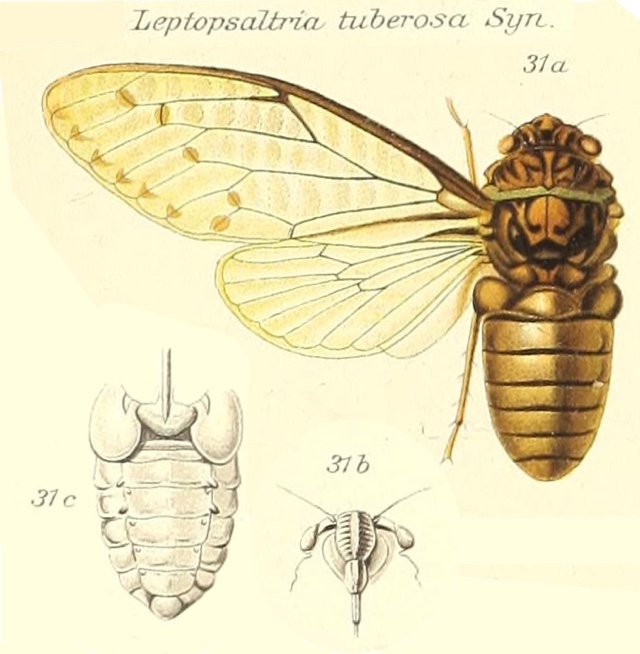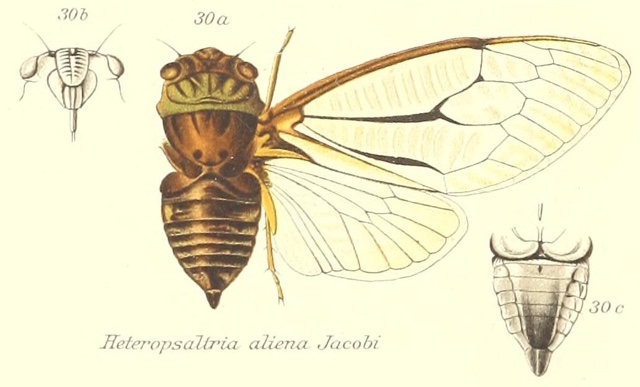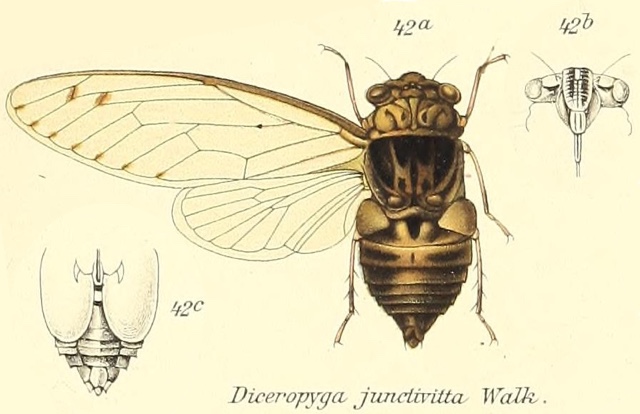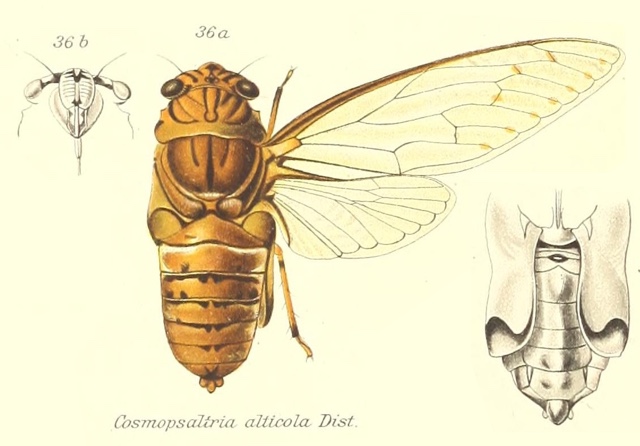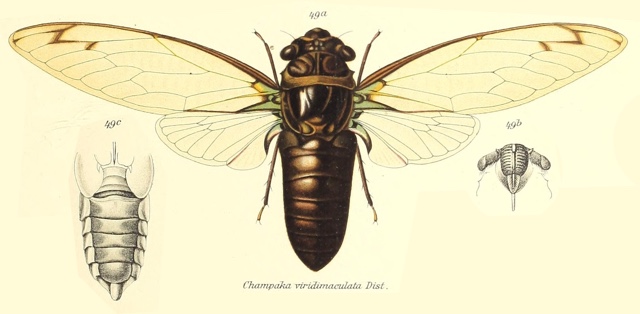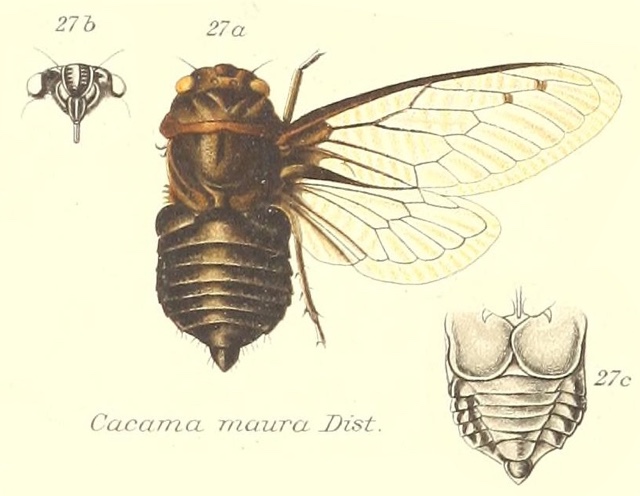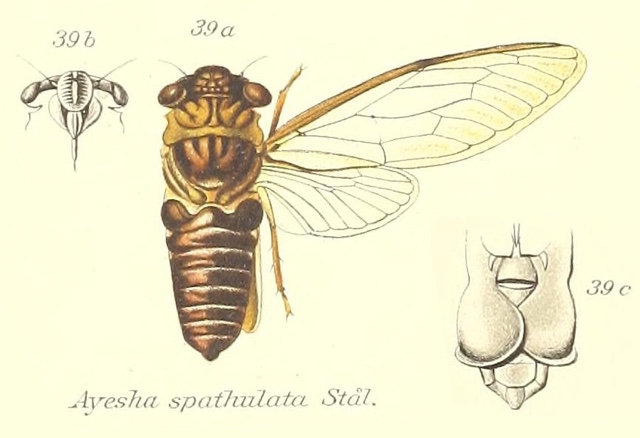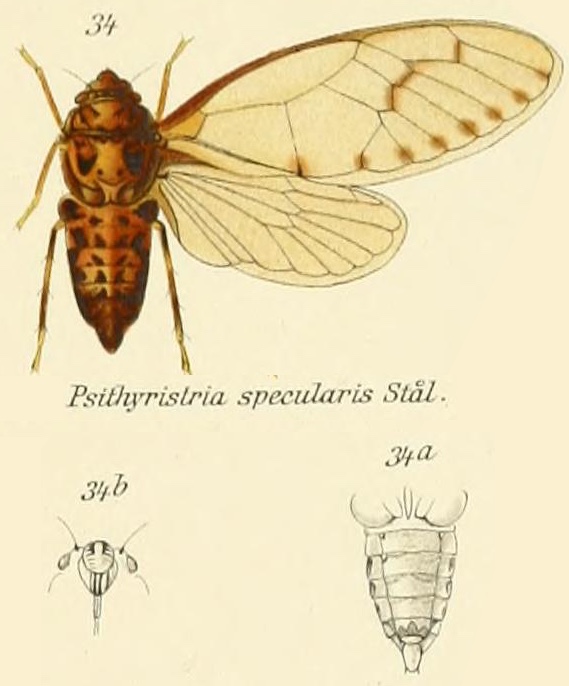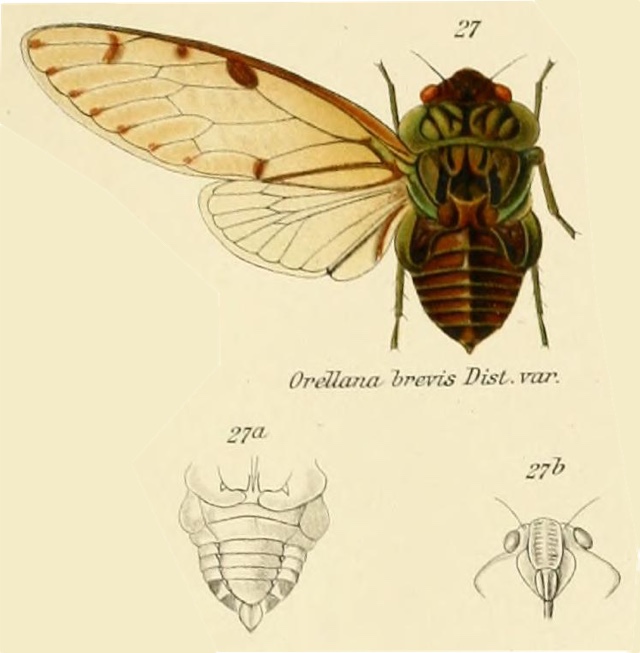Maua affinis Distant, 1905, is a cicada found in Borneo (Brunei, Indonesia, Malaysia).
Scientific classification:
Family: Cicadidae
Subfamily: Cicadinae
Tribe: Leptopsaltriini
SubTribe: Leptopsaltriina
Genus: Maua
Species: Maua affinis Distant, 1905
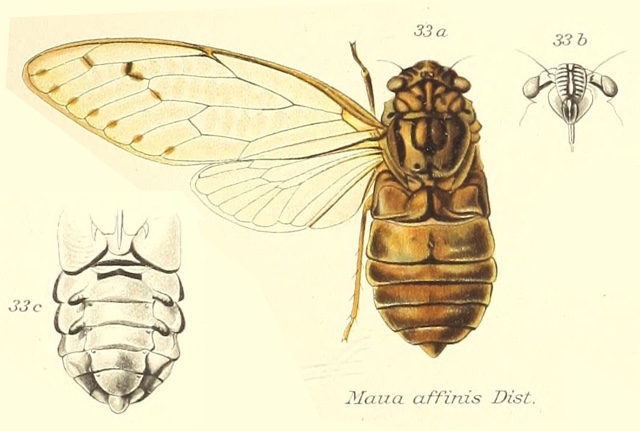
Maua genus description by W. L. Distant in Genera Insectorum, 1913:
Characters. — Head (including eyes) as wide as base of mesonotum and as long or a little longer than space between eyes; face prominent and elongately convex, not in a line with vertex; pronotum narrowed anteriorly, its lateral margins angulated or toothed; mesonotum much longer than pronotum; abdomen broad, its apex about or almost as broad as base, in male not or scarcely longer than space between apex of head and base of cruciform elevation, tubercles on the second and third ventral segments very large and prominent, opercula small; tympanal coverings in male sometimes as long as, sometimes shorter than, breadth at base; rostrum reaching, generally considerably passing, the posterior coxa; tegmina and wings hyaline.
References:
- The illustration and genus description comes from the journal Genera Insectorum, and a specific article from 1913 by W. L. Distant titled Homoptera. Fam. Cicadidae, Subfam, Cicadinae. Read it on the Biodiversity Heritage Library website.
- Current species name verified using Allen Sanborn’s Catalogue of the Cicadoidea (Hemiptera: Auchenorrhyncha).
